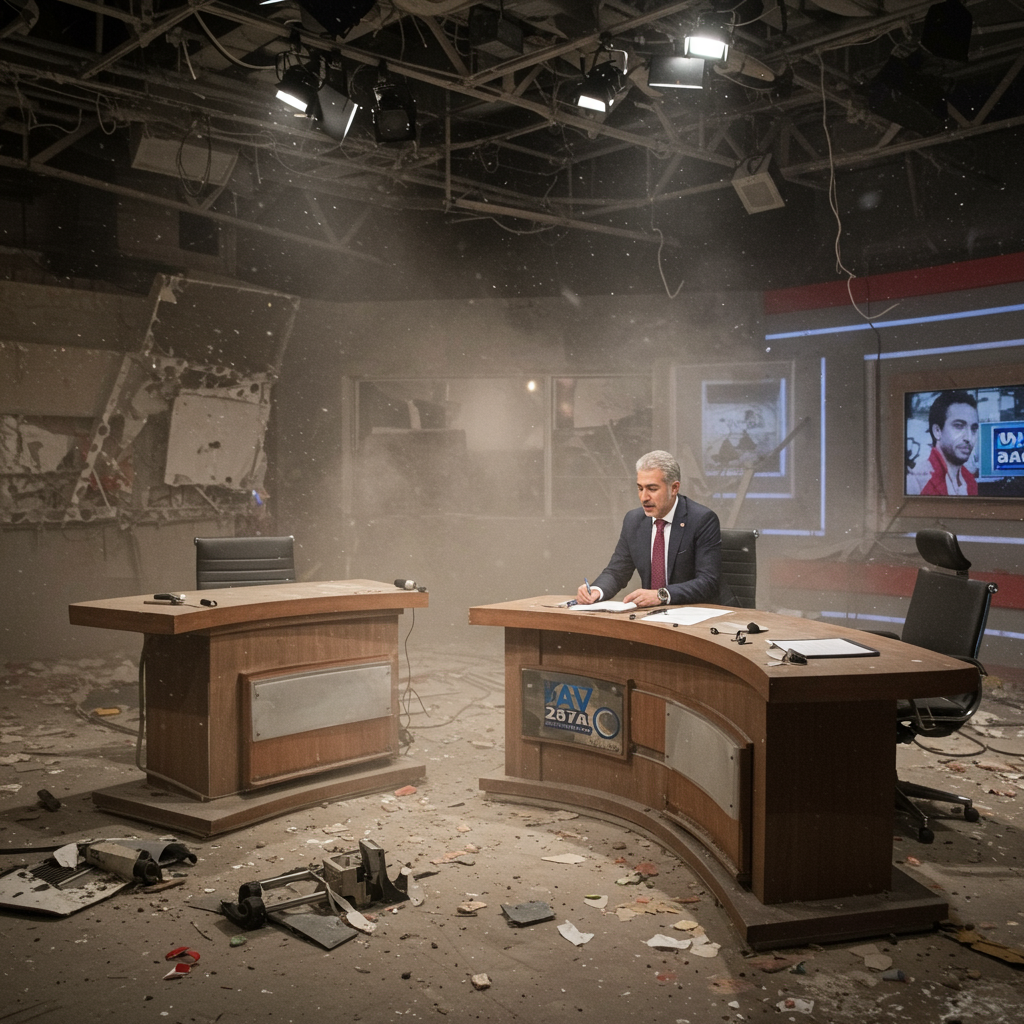Live Broadcast Hit as Israel-Iran Conflict Intensifies
Amid soaring tensions and a fourth day of open warfare, Israel has escalated strikes against Iran, including targeting the country’s state-run television station in Tehran during a live broadcast on Monday, June 16, 2025. The incident, which sent a news presenter scrambling off-camera as dust and debris filled the studio, underscores the increasingly direct nature of the confrontation between the regional adversaries.
The strike on the state TV building followed a new wave of Iranian missile attacks against Israel, which triggered air raid sirens across the country and resulted in multiple casualties and significant damage.
Chaos on Air: The TV Station Strike
According to Iran’s state media, the live broadcast from Tehran abruptly stopped after the Israeli strike hit the governmental television station. The sound of an explosion was clearly audible on air, followed by visuals of dust and debris obscuring the view as the news presenter quickly exited the frame. A reporter broadcasting at the time described the studio filling with dust after “the sound of aggression against the homeland,” just before the explosion cut the feed. The station later reported the building was struck by four bombs and some colleagues were injured, though Fars state media separately reported the death of a staff member and visible damage to the studio.
Israel’s military stated the TV station provided cover for Iranian military operations. They issued a prior evacuation warning affecting hundreds of thousands of people, potentially up to 330,000, in a central Tehran area that includes the state TV studios, police headquarters, and hospitals.
Back-and-Forth Strikes: Casualties and Damage
The strike on Iranian TV came hours after Iran launched a significant new wave of missile attacks on Israel. Israeli officials reported that these attacks on Monday killed at least eight people. Since the conflict began four days prior with Israel’s initial strikes targeting Iranian military and nuclear infrastructure, Iranian missile and drone attacks (totaling over 370 missiles and hundreds of drones) have killed 24 people and injured more than 500 across Israel.
Specific targets hit in Israel include:
A residential building in Petah Tikva, central Israel, suffered “massive destruction” with charring, shattered windows, and ripped walls.
The oil refinery in Haifa was struck for the second consecutive night. This attack ignited a large fire and killed three workers trapped when a stairwell in their safe room collapsed.
Explosions were reported across Tel Aviv, Petah Tikva, and Haifa.
A missile landed near the U.S. consulate in Tel Aviv, causing minor damage from blast waves but no injuries to American personnel.
In Iran, state media reported that Israeli strikes targeting military and nuclear sites have killed at least 224 people since Friday, with 1,277 wounded. However, rights groups like Human Rights Activists suggest this is a significant undercount, documenting over 400 fatalities, including 197 civilians. Reports included one individual killed in Israeli strikes in Tabriz and three drones hitting the South Pars gas production center. Fuel rationing was also reported in Iran.
Military Claims and Political Reactions
Both sides made bold claims about their military successes. Israel’s military spokesperson claimed “full aerial superiority over Tehran’s skies” and the ability to fly over the city without major threats. They reported destroying over 120 Iranian surface-to-surface missile launchers, two F-14 planes, multiple ballistic missile launchers, and 10 Quds Force command centers in Tehran, characterizing the strikes as a “deep and comprehensive blow.” Iran, meanwhile, reported launching around 100 missiles in its latest salvo.
Israeli Prime Minister Benjamin Netanyahu stated that the Israeli strikes have significantly set back Iran’s nuclear program, estimating it would take “a very, very long time” to recover. While asserting Israel was not trying to topple the Iranian government, he added he wouldn’t be surprised if the strikes had that effect, describing the Iranian regime as “very weak.” The Israeli President reportedly stated Israel had “no choice” but to attack Iran.
Former U.S. President Donald Trump weighed in forcefully, posting a message on social media calling for the immediate evacuation of Tehran, a city with a population around 9.5 million. He stated he was in daily touch with Netanyahu and reiterated his firm stance: “IRAN CAN NOT HAVE A NUCLEAR WEAPON,” linking the current conflict to Iran’s failure to sign a “deal” he had proposed, calling the situation “a shame, and waste of human life.” White House Press Secretary Karoline Leavitt confirmed Trump cut his G7 summit visit in Canada short by a day to return to Washington due to the intensifying conflict.
Iran’s Ambassador Amir Saeid Iravani condemned the strike on state TV as a “blatant war crime and a direct assault on press freedom.” Iranian Foreign Minister Abbas Araghchi posted a veiled message on X, suggesting U.S. intervention, stating if Trump was “genuine about diplomacy,” it would “take one phone call from Washington to muzzle someone like Netanyahu,” potentially allowing a return to talks. However, the Revolutionary Guard vowed further strikes would be “more forceful, severe, precise and destructive.”
The escalating exchange has significantly heightened regional tensions and raised fears of an all-out war, occurring shortly after U.S.-Iran talks were canceled following earlier Israeli strikes targeting Iranian officials. Other factors adding to the complexity include Israel’s Mossad reportedly positioning weapons inside Iran before the initial assault, leading to detentions and an execution in Iran on espionage charges, and Cyprus diverting dozens of flights from Israel. Amidst the destruction, one resident in Petah Tikva, whose apartment was destroyed by a missile, urged Netanyahu to continue the attacks, stating it was “totally worth it… This is for the sake of our children and grandchildren.”



